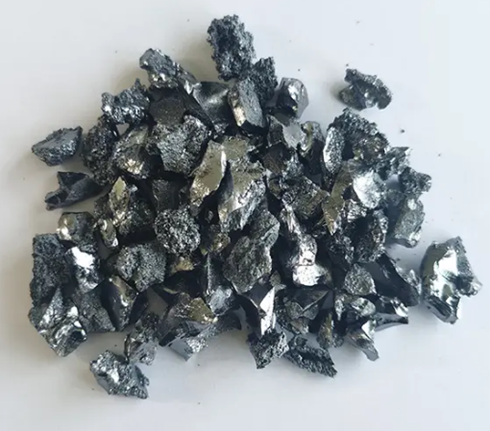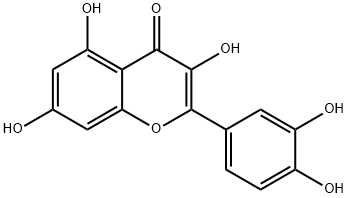Natural Pharmaceutical Ingredient Quercetin: Functions, Benefits, Side Effects
Mar 12,2024
What is Quercetin ?
Quercetin is a plant pigment belonging to the class of flavonoids and a natural active herbal ingredient extracted from the flowers and buds of the leguminous plant Sophora japonica. It is yellow in appearance, insoluble in hot water, extremely soluble in alcohols and lipids, insoluble in cold water.
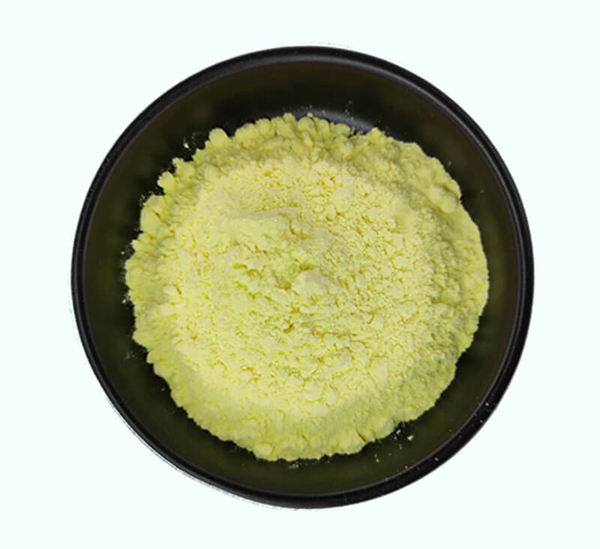
Quercetin is also widely found in the daily diet of fruits, vegetables and nuts. Examples include: citrus, buckwheat, broccoli, olive oil, apples, onions, cherries, grapes, nuts, berries, green tea, red wine, seeds and olive oil. Therefore, it is also commonly used as a dietary supplement.
Functions and Benefits of Quercetin
Studies have shown that Quercetin has antioxidant, anti-inflammatory, antibacterial, anticancer, anti-allergic, antihypertensive, and neuroprotective properties, and is one of the most widely used bioflavonoids used for the treatment of metabolic and inflammatory disorders, with important roles in human health.
antioxidant
Quercetin is a good antioxidant. They scavenge the body of free radicals, which damage cell membranes, tamper with DNA and cause oxidative stress. High levels of free radicals can lead to cell death, which in turn can lead to the development of many diseases such as heart disease, diabetes, neurodegenerative diseases, and even cancer. Therefore, proper supplementation of quercetin is important for maintaining human health.
anti-inflammatory
One of quercetin's most notable core properties is its ability to modulate inflammation. Quercetin inhibits the inflammatory enzymes cyclooxygenase (COX) and lipoxygenase, thereby reducing inflammatory mediators such as prostaglandins and leukotrienes. In addition, quercetin's ability to inhibit xanthine oxidase prevents the accumulation of uric acid, which may be helpful for subjects suffering from gout.
antibacterial
Quercetin has antimicrobial effects against almost all bacterial strains, particularly affecting the gastrointestinal, respiratory, urinary and skin systems. Its mechanism of action has also been reported, SarA is a positive regulator of S. aureus biofilm formation, and the effects of quercetin on S. aureus biofilm inhibition and biofilm components were consistent with changes in the transcriptional levels of biofilm-related genes regulated by SarA. Thus, the mechanism by which quercetin affects biofilm formation by inhibiting the S. aureus transcriptional regulator SarA is revealed.
anticancer
Quercetin has potential anticancer properties including antiproliferative, growth factor inhibition and antioxidant. Animal and in vitro studies have shown that quercetin and other flavonoids inhibit the growth of breast, colon, prostate, ovarian, endometrial and lung cancers. In a study of the combination of quercetin and curcumin in the treatment of familial adenomatous polyposis (FAP), curcumin and quercetin were shown to reduce the number and size of adenomas in the ileum and rectum.
anti-allergic
Researchers believe that quercetin may have a potential therapeutic role for allergies, asthma, hay fever and hives. This is due to its ability to act as a natural antihistamine by inhibiting the release of histamine from mast cells and other allergic substances. However, there is insufficient evidence to suggest that it is effective in humans.
antihypertensive
Research suggests that quercetin may help to reduce blood pressure levels by exhibiting important vasorelaxant properties in isolated arteries, helping to lower blood pressure and prevent the development of cardiac hypertrophy. In a study conducted by Greek cardiologists on 30 men who already had coronary heart disease (CHD), consumption of quercetin-rich polyphenol extracts of red grapes led to an increase in blood flow-mediated dilation of major arteries, which is an effective indicator of improved endothelial health. In addition, it also prevented CHD and reduced the risk of death caused by low-density lipoprotein (LDL).
neuroprotective properties
Studies have shown that quercetin and ascorbic acid reduce the incidence of oxidative damage to human lymphocytes and cutaneous neurovascular structures and inhibit damage to neurons. A quercetin-rich diet was also shown in a study to reduce markers of Alzheimer's disease and improve brain function in early to mid-stage mice.
antidepressant
In a study on the protective effects of quercetin against depression, we could find that quercetin attenuates depressive-like behaviours and cognitive deficits and reduces neuroinflammation by targeting HSP90 to inhibit the activation of NLRP3 inflammasome. Quercetin inhibited elevated HSP90 levels in the hippocampus and reversed inflammation-induced cognitive deficits. In addition, quercetin inhibited the elevated levels of cytokines (IL-6, IL-1β, MCP-1, and TNF-α) in the hippocampus and the elevated levels of cytokines (IL-6, IL-1β, and MCP-1) in microglia of mice in a depression model. The current study suggests that quercetin attenuates depressive-like behaviours and inhibits activation of NLRP3 inflammasome by targeting HSP90 in microglia and depression model mice, while ameliorating cognitive deficits in depressed patients. Quercetin has great potential for novel pharmacological efficacy in antidepression.
Side Effects of Quercetin
Quercetin is well tolerated and relatively safe in most cases. Its common side effects may include headaches and stomach upset. Preliminary evidence suggests that quercetin by-products can cause loss of protein function. Very high doses of quercetin may damage the kidneys. Quercetin should be avoided in pregnant and lactating women and in patients with kidney disease. Kidney damage has been reported at doses greater than 1 gram per day.
References
[1] PANPAN LIU. Quercetin targets SarA of methicillin-resistant Staphylococcus aureus to mitigate biofilm formation.[J]. Microbiology spectrum, 2024. DOI:10.1128/spectrum.02722-23.
[2] LONGFEI DU. Quercetin Ameliorates Cognitive Impairment in Depression by Targeting HSP90 to Inhibit NLRP3 Inflammasome Activation.[J]. Molecular Neurobiology, 2024. DOI:10.1007/s12035-024-03926-x.
- Related articles
- Related Qustion
N-Vinyl-2-pyrrolidone has some special chemical properties because of the vinyl group on its nitrogen atom. The most important of them are easy polymerization and hydrolysis.....
Mar 12,2024Organic reagentsElemental boron is rare and poorly studied because the pure material is extremely difficult to prepare. Most studies of "boron" involve samples that contain small amounts of carbon.....
Mar 12,2024Inorganic chemistryQuercetin
117-39-5You may like
- The new research on Silychristin
Apr 29, 2024
- What is chlorella spermidine?
Apr 19, 2024
- Does icariin help with pain?
Apr 18, 2024
- Quercetin
-

- $30.00 / 1kg
- 2024-04-30
- CAS:117-39-5
- Min. Order: 1kg
- Purity: 99%
- Supply Ability: 20Tons
- Quercetin
-
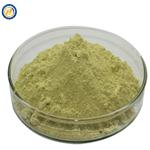
- $0.00 / 20kg
- 2024-04-29
- CAS:117-39-5
- Min. Order: 20kg
- Purity: 99%
- Supply Ability: 200000
- Sophora japonica extract quercetin
-
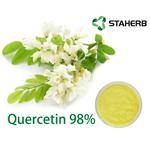
- $0.00 / 1KG
- 2024-04-28
- CAS:117-39-5
- Min. Order: 1KG
- Purity: ≥98% HPLC
- Supply Ability: 1000KG




